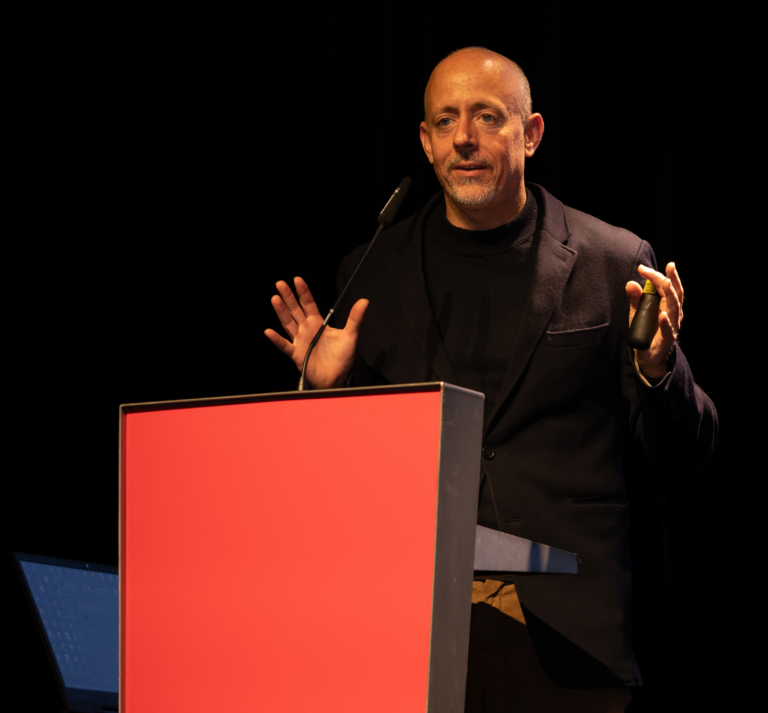
From Borders to Processes: Rethinking Europe’s Digital Resilience
Europe’s security has always depended more on managing processes together than on defending borders. At the European Resilience Summit in Berlin, we will revisit this concept, asking how Europe could strengthen its organisations and industries, integrate global technologies on its own terms and foster a shared culture of resilience in order to secure its digital future.
Introduction
The European integration movement can teach us a lot. Its greatest governance innovations, the „acquis communautaire,“ which created shared processes and standards; and „subsidiarity,“ the principle of smart decentralisation, defined Europe’s unique model of cooperation. Security and stability came from managing processes together, not from defending borders.
At the European Resilience Summit in Berlin, we will explore how to build on these strengths. How can Europe extend its historic success in creating peace within the Union to meet the challenges of a turbulent digital world? How can we strengthen our organisations and industries, integrate global technologies on our own terms, and foster a shared culture of resilience?
Because Europe’s digital future won’t be secured by isolation. It will be shaped by the networks we establish, the trust we foster, and the collaborative processes we implement.
Learning from Europe (and Where It Didn’t Translate)
In 2007, we organised a workshop at the Harvard Kennedy School titled “Learning from Europe”. Our idea was simple yet ambitious: could the European model of integration, which focuses on managing cross-border processes rather than hardening borders, provide any useful insights for addressing the issues of sovereignty and migration between the United States and Mexico?
We brought together an impressive group of people, including representatives from the White House and Los Pinos (Mexico’s Presidency), senior policymakers, and journalists from The New York Times. At the time, the argument seemed persuasive. Europe’s success was based on the same principle: visa-free travel agreements, the integration of Eastern European countries into the EU, and broader security frameworks. By agreeing on shared standards and requiring internal reforms in exchange for tangible benefits, Europe had strengthened security while expanding freedom.
And the results were striking. Central and Eastern European countries that adopted this process-based approach experienced decades of rapid economic convergence, often tripling or quadrupling their GDP per capita between 1990 and 2020. Mexico, by contrast, as member of NAFTA followed a much more border-centric paradigm, experienced far slower income growth.
Yet at Harvard, the idea met resistance. Even liberal journalists among our U.S. and Mexican colleagues insisted that sovereignty is defended at the border, and only there. This was a revealing moment: while Europe had built prosperity by coordinating processes across borders, much of the rest of the world still viewed borders themselves as the ultimate guarantor of security.
Today, Europe is engaged in an analogous debate. This time concerning cybersecurity and digital sovereignty.
Digital Sovereignty: The New Anxiety
Across Europe, digital sovereignty has become a defining theme. However, much of the debate assumes that sovereignty means owning the entire technology stack, from chips and data infrastructure to AI models and clouds. In today's deeply globalised and networked world, this ambition often leads to frustration and anxiety.
Complete autonomy is neither realistic nor efficient for any country on planet Earth. Attempts to enforce it can have unintended consequences, such as fragmented markets, stifled innovation and missed opportunities for global collaboration.
Cybersecurity offers a powerful analogy. Traditional strategies focused on defending the perimeter, like guarding a castle wall. However, modern threats move freely across borders, systems and networks. Real security today comes from accepting that risks are everywhere and shifting the focus towards continuously managing flows and verifying trust at every step. In cybersecurity, this approach is called 'zero trust'.
Europe’s political integration has long employed a similar mindset, coordinating processes across borders rather than attempting to seal them off entirely. However, it is not clear whether Europe can translate this strength into its digital future by shifting from the illusion of total control to a model of practical resilience in an interdependent world.
Four Questions That Guide Us
Resilience is not a thing. It is not a policy, a technology or a single framework; it is a multidimensional practice. In order to build Europe’s capacity to thrive in times of disruption, we must work across different layers, each of which requires distinct skills, logics and communities. At the Summit, we will explore four guiding questions:
- How can we strengthen organisations against digital and systemic threats? Resilience starts with securing the foundations by hardening organisations. This raises two sub-questions: what security controls are needed to protect people, devices, applications and data without placing an excessive burden on users, management and costs? Secondly, how can this be scaled up across industries and societies?
- How can Europe build resilient industries? Europe requires stronger capabilities in critical areas such as the cloud, AI, energy and defence. The challenge is to build ecosystem strength. Thriving industries emerge from clusters where companies, regulators, researchers and financiers evolve together. According to Michael Porter's Diamond Model, Europe's competitiveness depends on innovation density, a diverse supply chain, and minimising single points of failure.
- How can we integrate global platforms without losing sovereignty? Europe will always rely on global technologies, ranging from hyperscalers to world-class AI models. Sovereignty does not mean isolation; it means managing interdependencies. To achieve this balance, we need an enterprise architecture approach that combines technical and organisational measures with smart regulation. This will ensure Europe benefits from the best global services while maintaining control over standards, data, and security.
- How can we foster a shared European culture of resilience? Ultimately, resilience depends on people. While Europe’s diversity is a strength, it can also hinder our ability to respond in times of crisis. We need networks of trust that are established during peaceful times and activated during periods of disruption. Communities that share knowledge, learn together and collaborate are essential for an effective response to disruption. Here, resilience is both a soft skill and an organisational discipline.
Who's in the Room
The Summit brings together some of the most influential voices shaping Europe’s digital future. During the two-day event in Berlin, policymakers, technologists, business leaders, researchers and strategists will come together to reconsider what resilience means in practice.
Gerald and Francesca Knaus will open the event by defending and reimagining the European project, asking how Europe’s integration logic can guide us in today’s turbulent world. Cristina Caffarra will take a deep dive into the Eurostack and its implications for Europe’s competitiveness in the global tech race. Meanwhile, Ralf Schneider from Allianz and Udo Riedel of DriveLock will explore how to secure systems at scale and develop cybersecurity strategies that keep pace with the speed of interconnection.
Mustafa Isik of AWS will discuss how Europe can integrate global platforms without relinquishing sovereignty. Dr Alexander Schellong of Schwarz Digits will focus on establishing robust European industries that can compete globally. Jutta Juliane Meier, founder of Identity Valley, will explore the future of trust and identity frameworks, and Kai Zenner from the European Parliament will explain how regulation can enable innovation rather than hinder it.
We will also hear from Timo Kob on how to build a cyber-resilient nation, from Ammar Alkassar on Germany’s role in a digitally sovereign Europe and from Ansgar Baums on how to secure supply chains in an age of geopolitical risk. Providing a forward-looking perspective, Sofie Schönborn from the TUM Think Tank will present research mapping opportunity spaces for digital sovereignty and identifying areas in which Europe can take the lead.
Together, these speakers offer a diverse blend of expertise in policy, technology, industry, and research. Throughout the event, they will engage directly with participants in panels, workshops and open discussions to co-create solutions, test ideas and challenge assumptions about what European resilience really requires.
Toward a Resilient Europe
By the end of the summit, we hope to have a clearer idea of how Europe can strengthen its organisations, develop robust industries and world-class services, and promote a shared culture of resilience.
However, this isn’t a one-off event; it marks the beginning of an annual series of summits to be held in Berlin, The Hague, London, Paris and Vienna. Our goal is to establish a connected European community based on trust and collaboration.
Europe’s security and digital future cannot be secured by walls or isolation. They will be built process by process, trust by trust, and network by network. This Summit is about more than just talking about resilience. It’s about practising it, learning from each other and taking collective action.
About Philip Müller
Philip Müller is a Fellow of Practice at the TUM Think Tank (see his project below) and co-chairs the European Resilience Summit.



